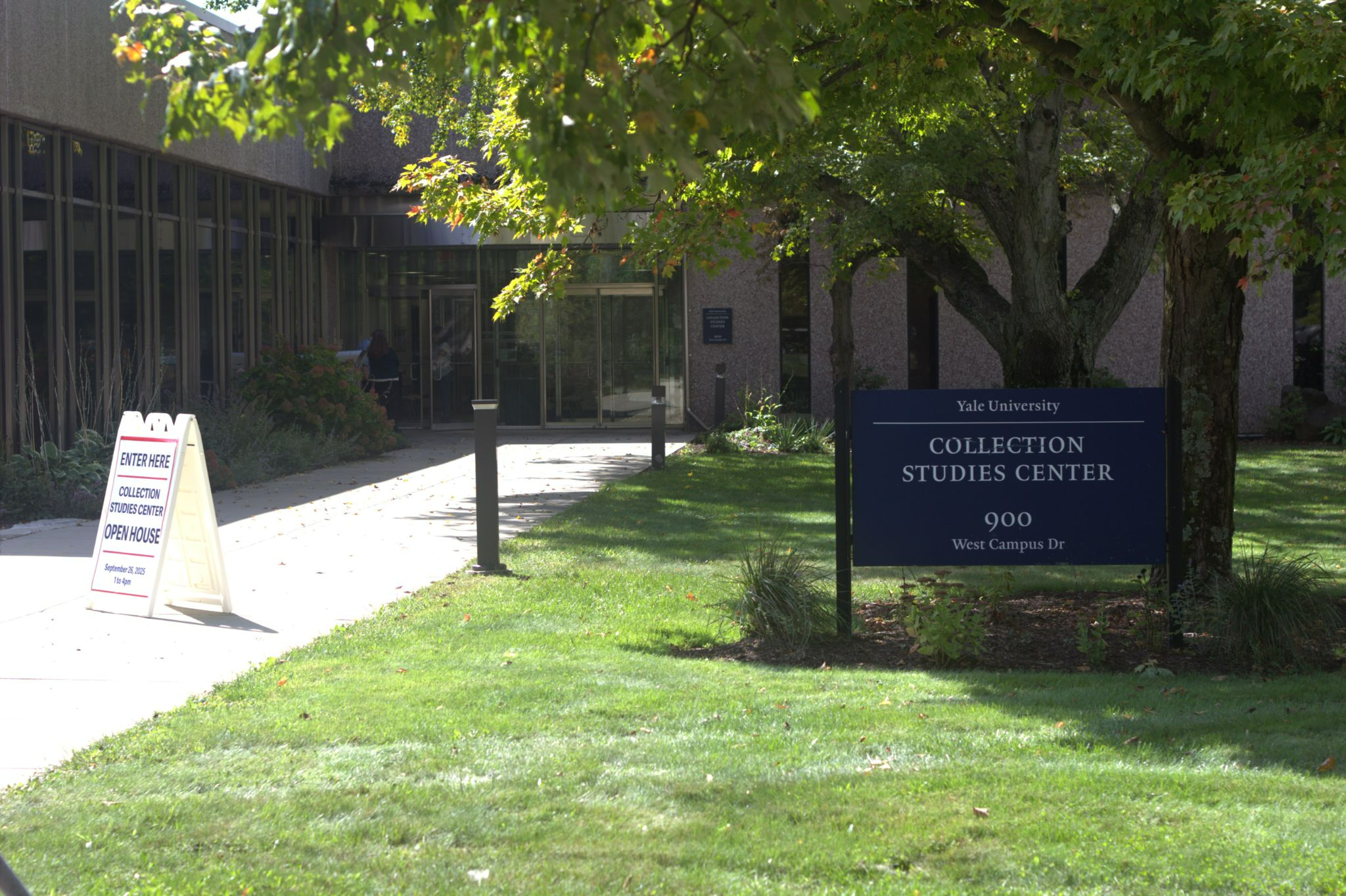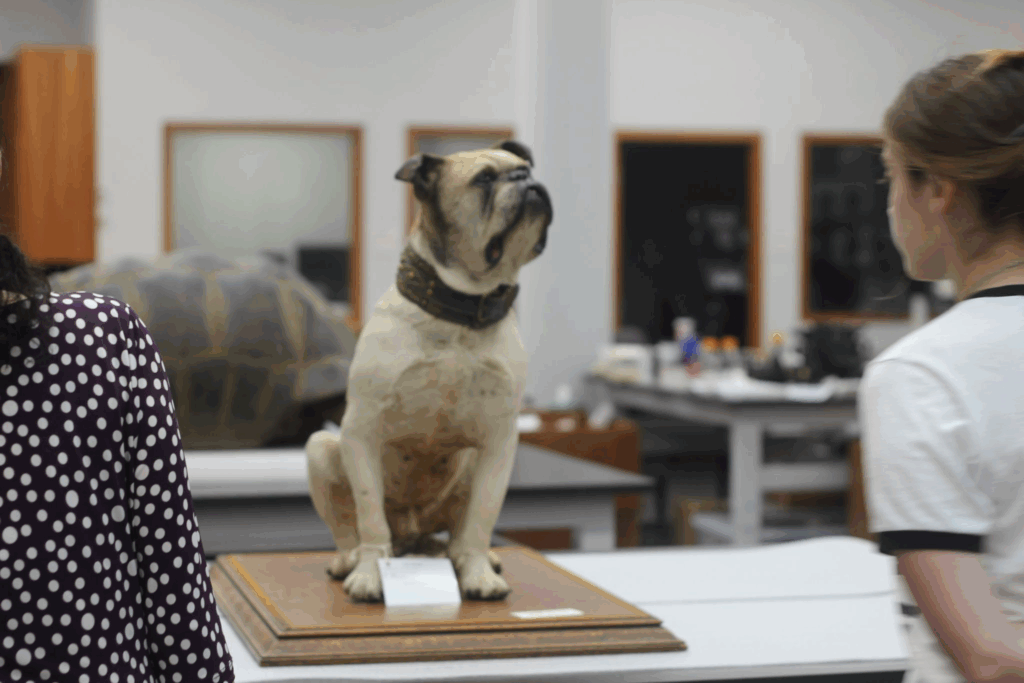West Campus open house invites the public to see conservation efforts
At a Collection Studies Center open house, visitors toured Peabody Museum and Yale Art Gallery artifact collections and watched conservators repair objects for display.

Michelle So, Contributing Photographer
An open house at Yale’s West Campus welcomed community members into the University’s conservation center on Friday.
At the Collection Studies Center, curators and conservators highlighted artifacts pulled from collections at the Yale University Art Gallery and Peabody Museum and demonstrated various restoration techniques as visitors toured the gallery’s conservation laboratory along with storage spaces and labs for artifacts.
Conservation is “like a three-legged stool,” Jen Mikes, an assistant conservator at the YUAG, said, “where you need to know studio art so that you have the hand skills to sort of fix things. You need to have either art history, archeological, cultural or historical context. And then you also need to have a chemistry background.”
Mikes was providing a demonstration about conservation. At a table, she worked on creating a filling to restore a mug, which had been created — and intentionally broken — by a student.
She spoke about the role of science in conservation.
“The place that the chemistry comes in is you need to have an understanding of the physical properties of the art that you’re working with,” Mikes said. “How is it going to behave when it breaks? How is it going to break when it ages? How is it going to age? What’s going to happen if you put it in a really hot or really humid environment, and how can we protect it from different types of deterioration?”
Conservators examine the materials an artifact is made of and are careful not to damage original paints. If possible, Mikes said, she tries to repair fissures and missing pieces using material of the same shade as the original.
A common issue that conservators encounter is the salt content in an artifact. Sometimes, Mikes said, excavated ceramics have absorbed salt from their environment over the years. The salt vaporizes in humid atmospheres and then can recrystallize inside the artifact.
“The crystals of salt physically push the ceramics’ body in different little ways. It starts to get really crumbly,” Mikes said. “It’s especially bad if you have any paint on there, because certain salts will slowly come out and push the paint out of the way, so it’s a mess.”
To fix that, conservators often soak artifacts like ceramics in a tub of water, in order to leech the salt out, Mikes explained.
Musical instruments in the collection undergo similar issues — salt and oils accumulate inside instruments because of musicians’ humid breath, Susan Thompson MUS ’79, curator of the Morris Steinert Collection of Musical Instruments, explained. She presented two intricately ornamented “presentation bugles,” each nearly two centuries old, which were deep-cleaned before going on display.

Lisa Brody ’91, associate curator of ancient art at the YUAG, displayed artifacts from the Dura-Europos excavation site in Syria, which are not usually on view. The artifacts include leather shoes, rope items and a painted Roman shield.
Organic materials like leather and wood are not typically found intact — or at all — but the Dura-Europos site has unique environmental conditions.
“Everything that you see here — the best conditions for their preservation are very dry, sort of arid desert type environments, so that’s why you see things like this from ancient Egypt more often than Greece or Italy,” Brody said.
Once the artifacts are in the museum’s possession, she added, the curators and conservators keep them at a stable temperature and humidity in storage or on view. However, because organic materials are so fragile, they do not restore or change the appearance of the artifacts much.
Sometimes, for aesthetic and visual reasons, curators and conservators try to piece together broken artifacts. Brody displayed a Roman-era shield called a scutum, made from wood and leather, painted with ornate decorations. Though the shield was excavated in pieces, archaeologists at the time reassembled it — a practice modern-day curators stray away from.
Pieces from the Peabody Collection were also on view, including the bones of a boa constrictor, a taxidermied tortoise and the first Handsome Dan — in taxidermied form.








